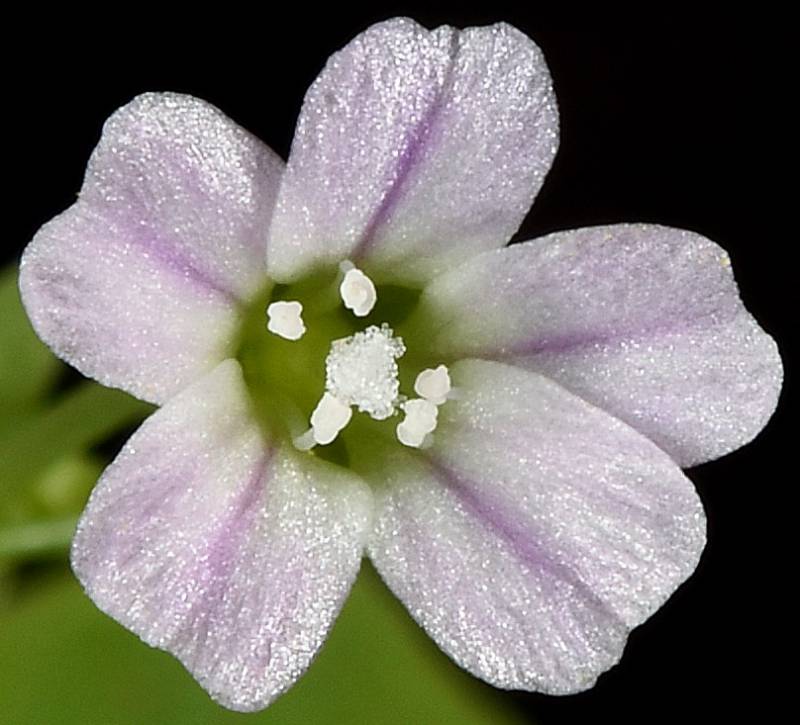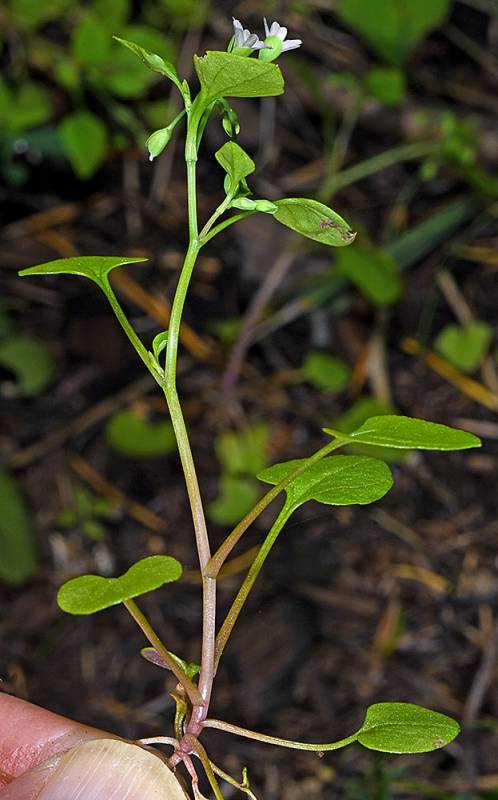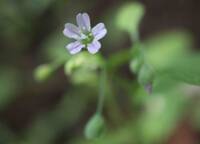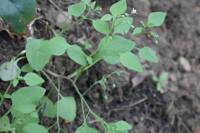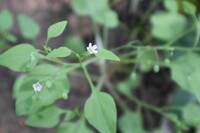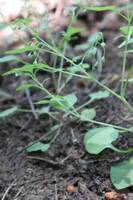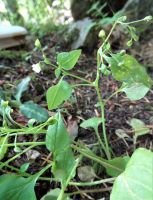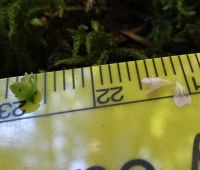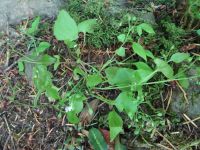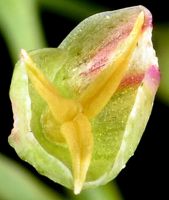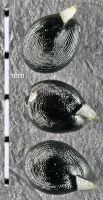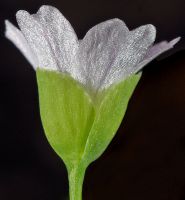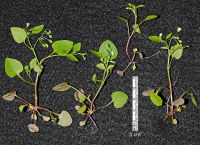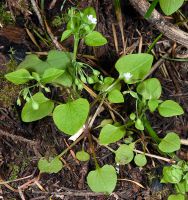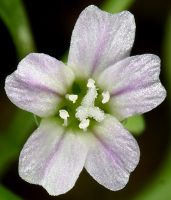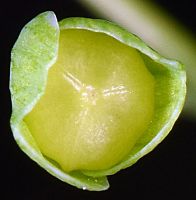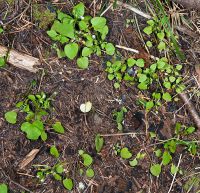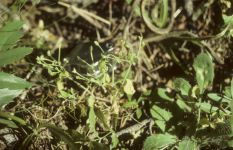Distribution: Occurring chiefly west of the Cascades crest in Washington; southern British Columbia to Marin County, California.
Habitat: Moist woods at low elevation.
Flowers: April-July
Origin: Native
Growth Duration: Annual
Conservation Status: Sensitive in Washington (WANHP)
Pollination: Bees, flies
Low, spreading, diffusely-branched annual, up to 4 dm. broad and 2 dm. tall
Basal leaves few, the blade lanceolate to sub-orbicular, 1-2.5 cm. long, abruptly narrowed to a petiole 2-4 times as long; cauline leaves alternate, petiolate, not greatly reduced upward, lanceolate-rhombic, the lower ones with blades up to 5 cm. long.
Inflorescence of axillary racemes clustered toward the branch ends, the lower 1 or 2 of several flowers often from the axil of a leafy bract; sepals 2, 2-3 mm. long, unequal; petals usually 5, white or pink, 3-4 mm. long; stamens 5; style 1, stigmas 3, elongate.
Inflorescence of axillary racemes clustered toward the branch ends, the lower 1 or 2 of several flowers often from the axil of a leafy bract; sepals 2, 2-3 mm. long, unequal; petals usually 5, white or pink, 3-4 mm. long; stamens 5; style 1, stigmas 3, elongate.
Publication: Fl. Francisc. 181. 1891. 1891.
Limnalsine diffusa (Nutt.) Rydb.
PNW Herbaria: Specimen records of Montia diffusa in the Consortium of Pacific Northwest Herbaria database
WA Flora Checklist: Montia diffusa checklist entry
OregonFlora: Montia diffusa information
E-Flora BC: Montia diffusa atlas page
CalPhotos: Montia diffusa photos

